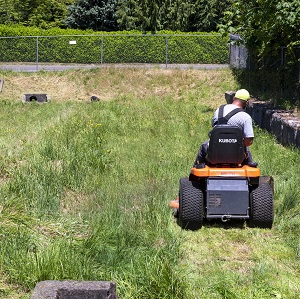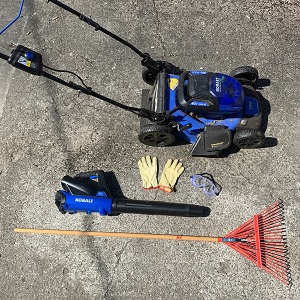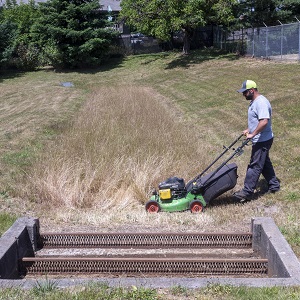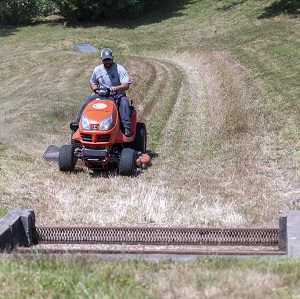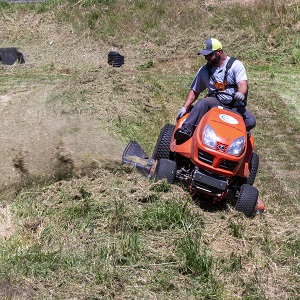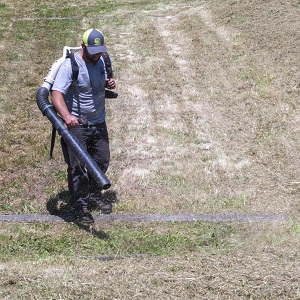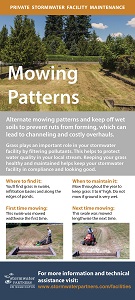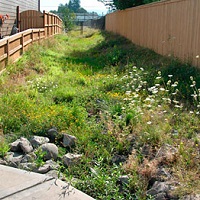Mowing Patterns
Grass plays an important role in your stormwater facility by filtering pollutants. Alternate mowing patterns and keep off wet soils to prevent ruts from forming, which can lead to channeling and costly overhauls. Keeping your grass healthy and maintained helps protect water quality in your local stream. It also helps keep your stormwater facility in compliance and looking good.
ground can help prevent ruts from forming.
Where to find it:
You’ll find grass in swales, infiltration basins and along the edges of ponds.
When to maintain it:
Mow throughout the year to keep grass 3 to 6” high. Do not mow if ground is very wet.
What you'll need:
- PPE (gloves, eye and ear protection)
- mower - push or riding mower
- blower or rake
Tools you'll need:
Mow this way one time:
the swale one time and the length next.
Next time mow this way:
swale and the width.
Step 1
When the swale is not excessively wet, mow
grass to 3-6" high.
Step 2
Keep grass on swale side slopes below
12" high.
Step 3
Use a blower or rake to remove grass clippings
from the swale bottom.
Step 4
Next time you mow, go in a different direction to
prevent ruts from forming.
Stormwater facilities where mowing pattern practices should be used:
Swale
